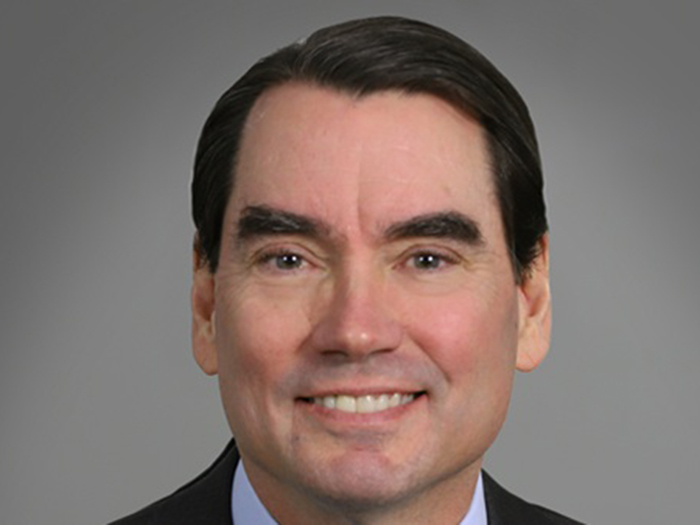What Are the Key Drivers of Workers’ Comp Costs? This NCCI Report Reveals the Answers

Facilities? Physicians? Medical equipment? Where are most dollars spent on workers’ compensation medical costs and what might the future hold?
Answers to those questions, and predictions for what’s to come, can be found in the Medical Fee Schedules and Workers’ Compensation 2023 annual review.
This review, published by the National Council on Compensation Insurance (NCCI), was first done in 2021 and tracks changes in Centers for Medicare & Medicaid Services’ (CMS) reimbursement rules and rates that impact workers’ compensation medical costs.
“This study is important, because many states incorporate the factors published by Medicare into their workers’ compensation fee schedules,” said Jon Sinclair, director and actuary for NCCI.
The good news is that spending on workers’ comp related to fee schedules is not likely to soar in the next year.
“The incorporation of 2023 Medicare factors into workers’ compensation fee schedules is not expected to put significant upward pressure on medical payments in workers’ compensation,” Sinclair said.
“While Medicare’s 2023 payment rates saw higher than average increases for some medical services, payment rate changes for other medical services were at or below recent years.”
Sinclair noted that for physician services, Medicare published a reduction (-2.1%) to the conversion factor for 2023.
“This reduction is at or below the changes to the physician conversion factor in recent years,” he said.
For hospital outpatient, Medicare published a 1.7% increase in the base rate for 2023.
“This is in-line with changes to outpatient in recent years,” he said. “The increase to the outpatient base rate would have been higher, but there was a budget neutrality adjustment which reduced the 2023 outpatient rate by 3.09%. This adjustment was to offset a cost increase resulting from the court case American Hospital Association v. Becerra.”
The study also highlights other relevant changes and their potential impact on workers’ compensation medical costs.
The impacts of these changes on workers’ compensation medical costs vary by state and are influenced by other factors including medical service categories covered by medical fee schedules, the extent to which each fee schedule incorporates the CMS rules and rates, and the distribution of medical costs.
“Fee schedules in workers’ compensation influence the prices paid for medical services. So evaluating the changes published by Medicare provides foresight into where medical costs in workers’ compensation may be headed in 2023,” Sinclair said.
Cost Leaders
The study found that facilities (hospital outpatient, hospital inpatient and ambulatory surgical centers) and physician costs led the way in fees, each amounting to about 40% of workers’ compensation medical expenditures nationwide.
These categories were followed by durable medical equipment, prosthetics, orthotics and supplies (DMEPOS), which range from 4% to 13% depending on the state.
Sinclair said the findings that facilities and physician spending lead the way in costs is not much different from previous years.
“Physician and facility costs have consistently made up the largest share of medical costs in workers’ compensation,” he said.
“So, any changes that impact either physician or facility costs will typically have the greatest impact on overall medical costs in workers’ compensation.”
Facilities at a Glance
Spending on facilities, which includes hospital outpatient, ambulatory surgical center and hospital inpatient, has been a significant workers’ compensation cost driver in recent years.
The study found that the hospital in-patient rate was $6,105.49 in 2019; $6,258.96 in 2020; $6,427.52 in 2021; $6,594.24 in 2022; and $6,859.53 in 2023.
The rate for hospital outpatient was $79.49 in 2019; $80.78 in 2020; $82.80 in 2021; and $84.18 in 2022.
The costs for ambulatory care also increased from $46.53 in 2019; $47.75 in 2020; $48.95 in 2021; $49.92 in 2022; and $56.85 in 2023.
Diving into Physician Fees
Physician costs account for about 40% of countrywide workers’ comp medical expenditures. Like facility fee schedules, physician fee schedules in WC are often based on factors published in the annual CMS Physician Fee Schedule.
There are two general components involved in the calculation of the Maximum Allowable Reimbursements (MAR) for a given physician service: Relative Value Units (RVUs) and a conversion factor.
RVUs are procedure-specific weights representing the relative expense to perform the procedure. The conversion factor is a constant factor applied to all non-anesthesia physician procedures that converts RVUs into dollars.
CMS publishes the conversion factor annually. CMS determines the conversion factor beginning with the prior year’s conversion factor and adjusts it with respect to multiple factors, including statutory requirements and compliance with budget neutrality.
The conversion factor for 2021 was 34.8931, a -3.3% change from the previous year. It was 34.6062 in 2022, a -8% change from 2021, and is 33.872 in 2023, which is a -2.1% change from 2022.
Statutory changes influence the 2023 conversion factor, including the expiration of the Protecting Medicare and American Farmers from Sequester Cuts Act that provided for a temporary 3% increase in physician payment rates. CMS initially published the physician conversion factor of 33.06, which would have been a –4.5% change from 2022.
However, in late December, the Consolidated Appropriations Act of 2023 provided for a temporary 2.5% increase to physician services under Medicare. This resulted in the final 2023 conversion factor of 33.8872.
The second key piece of the physician MAR formula is the RVUs.
CMS has not made significant changes to physician service RVUs since the 2021 update, which implemented large increases to evaluation and management codes. In the 2022 and 2023 CMS updates, RVUs have remained relatively stable. The 2023 update resulted in a moderate increase to RVUs across physician service categories.
The impact on WC medical costs will vary by state depending on the state’s reliance on CMS values in its rate setting. The interaction between the decrease in the conversion factor and increases in RVUs may result in a moderate decrease in physician costs for states which incorporate the CMS conversion factor.
Durable Medical Equipment, Prosthetics, Orthotics, and Supplies
Fee schedule costs for DMEPOS were up 0.9% in 2020; up 0.2% in 2021, and rose $5.1% in 2021.
The DMEPOS fee schedule for January 2022 increased the reimbursement for certain services by 5.1% ― significantly higher than prior years ― the January 2023 DMEPOS fee schedule increased reimbursement by +8.7%, even higher still.
How About Telemedicine?
While telemedicine was not covered in the 2023 study, NCCI reported in 2022 that, as a result of COVID-19, patients became more amenable to receiving remote treatment.
Due to unprecedented telemedicine growth in 2020, CMS expanded its list of telehealth services in 2021 and created a family of seven codes labelled as Remote Physiological Monitoring (RPM) services.
In its 2022 final rule, CMS announced the creation of a new family of codes called Remote Therapeutic Monitoring (RTM) services. These services allow the remote treatment of patients outside the traditional clinical environment.
Unlike RPM services (E/M codes for which the patient meets virtually with the provider and provides physiological data), RTM services are classified as general medicine services geared towards respiratory and musculoskeletal conditions and do not require the sharing of physiological data.
As the expansion of telemedicine and the establishment of the RPM and RTM code families are recent developments, the direct cost impact of these changes cannot be reasonably quantified at this time, the study found. &










